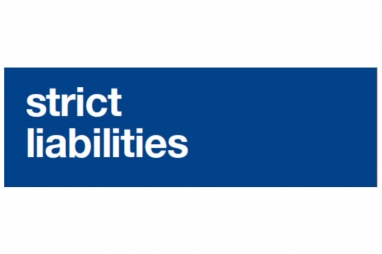- Кроссовки nike air jordan 1 retro “travis scott” — цена 1399 грн в каталоге Кроссовки ✓ Купить женские вещи по доступной цене на Шафе , Украина #124847932 , NIKE AIR JORDAN FUTURE BLACK METALLIC GOLD-BLACK
- Autry Medalist *Cracked Leather / Corduroy* – acheter maintenant chez Cheap Cra-wallonie Jordan Outlet !
- Luxury Online Shop
- Manor PHX – Cheap Ietp Jordan Outlet , Костюм спортивний adidas Eqt , Premium Footwear & Streetwear Boutique
- Жилетка adidas р , IetpShops , Τυπωμένο σχέδιο adidas
- Air Jordan 1 University Blue 555088 134 Release Date Price 4
- nike air force 1 boot cordura black wheat university gold do6702 001
- all star air jordan 1 gotta shine
- air jordan 1 mid chicago 2020 554724 173
- Air Jordan 1 Satin Black Toe CD0461 016 2019 Release Date 4
- Home
- News and analysis
- Info hubs
- Events
- Video
- Case Studies
- About us
- Magazine
- Advertising
Produced for the industry by the Association for Consultancy and Engineering
Strict liabilities
To illustrate the challenges faced by consultants regarding strict liabilities we consider two claims which arose from strict liability provisions that were to all intents and purposes hidden away in lengthy and complex contract terms.

Case study - strict liabilities 1
Case study - strict liabilities 2
In tort and most standard consultancy appointments, a consultant, as any other professional, has a duty to act with reasonable skill and care. This duty is also clearly set out in statute (under the Supply of Goods and Services Act 1982) and is a well-tested principle in the UK courts.
The principle of reasonable skill and care accepts that no professional, be they doctor, lawyer, consulting engineer or architect, can guarantee a particular result. The advice given by a professional will be based on reasonable assumptions of external factors that could affect the end result as well as an interpretation of the client’s needs, and neither tort law nor statute expects a professional to guarantee such assumptions.
"Individual contractual obligations can apply independently of one another. A contractual term imposing a strict liability in respect of a particular aspect of the services may well take precedence over a general obligation to exercise reasonable skill and care"
Some contract conditions, however, seek to extend a consultant’s common law duty by imposing liabilities that are strict or absolute, i.e. liabilities that apply irrespective of whether reasonable skill and care has been exercised.
Often these obligations can seem innocuous and they are commonly hidden away in contract documents or placed alongside seemingly reasonable provisions, the effect of which disguises the intent of the obligation. In this chapter we consider two claims which arose from strict liability provisions that were to all intents and purposes hidden away in lengthy and complex contract terms. In both cases, the liabilities imposed would not have been readily apparent to the layman possessing limited legal knowledge.
The case study- Costain Ltd-v- Charles Haswell & Partners Ltd heard before the Technology & Construction Court in 2009 – illustrates the point.
The second case study concerns a case that was determined at arbitration. As with the Haswell case, the dispute was between a consultant firm and its design and build contractor client.
Conclusion
There are a number of key messages that can be taken from the claim examples above. The first is that individual contractual obligations can apply independently of one another. A contractual term imposing a strict liability in respect of a particular aspect of the services may well take precedence over a general obligation to exercise reasonable skill and care.
The second key message reinforces the need to understand what obligations are imposed by your contract, and in particular, whether certain elements of your work will be subject to a higher duty of care than others.
For instance, the contract may impose a strict duty to adhere to a specific design requirement (e.g. a minimum lettable area for the development), or a strict duty to adhere to specific design release dates (or to the programme as a whole, as in the second claim example).
If you have any concerns on this front, then please bear in mind that we can assist by reviewing contracts for you, drawing attention to such obligations and advising on how they can be amended in order to mitigate the associated risks.
Skip to next section.
Introduction
Understanding contractual terms
Indemnity clauses
Strict liabilities
Certification
Net contributions and limits of liability
Novation
Closing remarks


